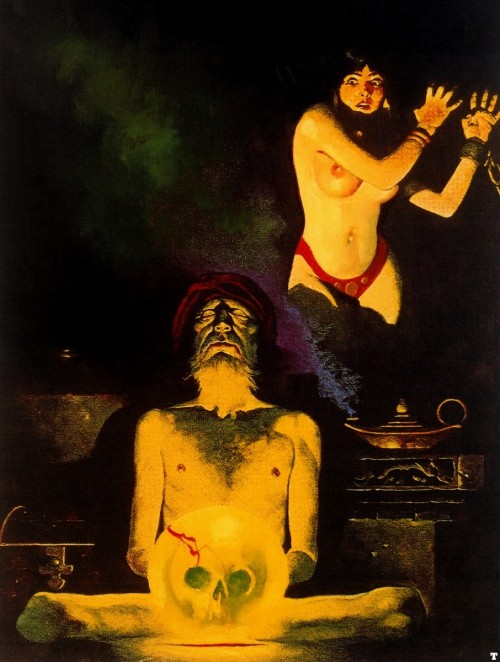#wichcraft
Flowers for types of witches
I decided to cataglorize some of my flower correapondeces for different types of witches. Enjoy!
Water/sea/lunar/love witches- lotus, lily, jasmine, gardenia, magnolia, violet, rose, peony, geranium, orchids, hydrangea, lilac, passion flower, petunia
☁️Air/storm/cosmic witches- (any aromatic/light flower) lavender, babys breath, dandelion, daisy, heather, freesia, daffodil, chrysanthemum, forget-me-nots, st John’s wort, primrose, bluebell, linden
Fire/solar/desert witches- sunflower, hibiscus, poppy, chamomile, chrysanthemum, aster, marigold, calendula, snapdragon, cactus flower, prickly pear blossom, carnations, poinsettia, st John’s wort
Green/earth/ forest witches-(any bulb/foraging/herbal flower) tulips, feverfew, echinacea, passionflower, comfrey, amaryllis, hyacinth, dahlia, iris, catnip flower, sage flower, basil flower
Kitchen/cottage witches- (any edible/fruit/vegetable flower) such as elder flower, honeysuckle, passionflower, apple blossom, strawberry blossom, orange blossom, rose, pansy, squash flower, marigold
Healing/garden/tea witches- (any healing/edible/aromatic flower) such as calendula, chamomile, helitrope, lavender, milk thistle, beebalm, yarrow, red clover, rosehip, passionflower, elderflower, lilac, violets, and orchids
**please do research on the flower before you ingest it in any way
Hello fellow witches! I just thought of dropping something historical today about us witches around the world! I hope you read it till the end and perhaps share it if you like! But please don’t feel offended! These are the words of a Christian Witch!
THE ORIGINS OF THE MODERN WITCH
A fearsome being of fairytale and myth, the witch has carved out a home in nearly every culture across the world and time. Indeed, the witch represents the dark side of the female presence: she has power that cannot be controlled.
While most people envision witches aging, ugly, hook-nosed women surrounding their cauldrons and inflicting toil and trouble on the masses, history tells us that the witch’s origins are far less sinister. In fact, those whom we consider to be witches have often been healers.
Carole Fontaine, an internationally recognized American biblical scholar, argues in an interview that the idea of the witch has been around as long as humanity has tried to deal with disease and avert disaster.
In the earliest centuries of human civilization, the women doctors, midwives, wise women, and priestesses were revered throughout their communities.
These wise women made house calls, delivered babies, dealt with infertility, and cured impotence. According to Fontaine:
“What’s interesting about them is that they are so clearly understood to be positive figures in their society. No king could be without their counsel, no army could recover from a defeat without their activity, no baby could be born without their presence.”
So how did the benevolent image of a wise woman transform into the evil figure of the witch we know today?
Some scholars maintain that the answer may be linked to events long before the birth of Christ, when Indo-Europeans expanded westward, bringing with them a warrior culture that valued aggression and male gods of war, which dominated the once-revered female deities.
The Holy Spirit that we worship was changed from the Hebrew feminine to the Greek neuter to the Roman Latin male.
In the 1300s, when the plague decimated Europe and killed one in three people, it also brought with it hysteria. Amid the panic, many attributed their misfortune to the Devil himself — and his supposed worshipers. At this point the Catholic Church’s Inquisition, which had already been established for decades, expanded its efforts to seek out and punish the non-Catholic causes of the mass deaths, including Devil-doting witches. These women were believed to worship in large nocturnal assemblies, where various social ills were performed, such as promiscuous sex, naked dancing, and gluttonous feasting on the flesh of human infants. At the climax of this festival, people at the time believed that the Devil himself would appear and participate in an unbridled orgy with all attendants.
In order to save the Church and its followers from the Devil, then, these women had to be tamed. It is with that in mind that Catholic Church inquisitors Jacob Springer and Henrik Kramer wrote the Malleus Maleficarum, a book which assisted witch hunters in the gruesome task of diagnosing and punishing so-called witches, who as women were sexually vulnerable and therefore easy prey for the Devil.
“What else is a woman but a foe to friendship?” wrote the monks. “They are evil, lecherous, vein, and lustful. All witchcraft comes from carnal lust, which is, in women, insatiable.”
The manual’s vivid descriptions would serve as a platform for zealous witch hunters to act on their prejudices for over 200 years. At the time, Malleus Maleficarum was second to the Bible in terms of popularity.
Fontaine notes that while there had been witch hunting manuals prior to the publication of the Malleus Malificarum, these two monks were the first to associate a specific gender with witchcraft.
By the end of the 1600s, the witch hunting hysteria in Europe reached its peak. Witch hunts spread like wildfire across Europe, the worst of which occurred in France and Germany. Würzburg, Germany was home to the worst instance of witch hunting: the magistrates of the time determined that most of the town was possessed by the Devil, and condemned hundreds to death.
Religion professor Barbara McGraw notes in a 1996 interview that there were some towns in Germany where there were no women left.
Thousands were arrested and brought to inquisitors for examination. Under an inquisitor’s brutal scrutiny, the accused were strippped and searched. Any “suspicious” wart, mole, or birthmark could be enough to receive a death sentence.
In order to execute the accused, however, they first needed to confess. Torture seemed to be the best way of inciting confession, and the Church would use instruments such as thumb and leg screws, head clamps, and the iron maiden to generate the “truth” needed to enact death.
While torturing women under examination, the Malleus Maleficarum warned the torturer not to make eye contact with her, as her “evil powers” might cause the torturer to develop feelings of compassion.
When this period ended at approximately the beginning of the 18th century, an estimated 60,000 people in Europe had been killed as witches.
Overseas, the most anthologized witch hunt took place in Salem, Massachusetts. The 17th century settlement had a rough beginning: decades of Indian Wars, land disputes, deep religious divisions and a tendency to look to the supernatural to explain the unknown helped set the grounds for this particularly “New World” brand of hysteria.
The witch hysteria in Salem began in 1692, in the home of a Puritan minister named Samuel Parris. Parris was deeply concerned about a game his daughter Elizabeth and niece Abigail had played, in which the two girls looked into a primitive crystal ball and saw a coffin. This vision sent them into convulsions, and within a few days nine other girls throughout the community were stricken with the same ailment.
Under the pressure of Parris, the girls then named three witches who may have cursed them: Tituba, their household slave, Sarah Good, a beggar woman, and Sarah Osborne, a widow rumored to have had an illicit affair with one of her servants. All three women were social outcasts, and thus easy targets for suspicion.
The 1692 Salem witch trials spread witch hunting hysteria to 24 outlying villages. That year, jails were crowded with more than 200 accused witches, 27 of whom were found guilty. 19 were killed.
The trials met a swift end, however, in part because supposed victims began pointing their fingers at high-ranking figures within the community. When the wife of the governor of Massachusetts was accused of witchcraft, leaders saw to it that the trials ceased immediately.
As to what spurred the girls’ confessions, Fontaine attributes them to a form of social release. The girls had been so tightly controlled in Salem, Fontaine argues, that this confession allowed the girls to receive some kind of attention.
Hundreds of years later, the fearsome image of the witch faded, and was absorbed by a popular culture who used the witch’s violent history as costume inspiration. Others, however, used it as a means to found a new spiritual movement.
In 1921, British archaeologist Margaret Murray penned a book called The Witch Cult in Western Europe, in which she argued that witchcraft had not been an obscure occult, but a dominant religious force. Though Murray’s theories have been widely discredited (proven to be untrue) since the book’s publishing, her work sparked a fascination with witches that had been dormant for three hundred years, eventually helping spawn the pagan Wicca religion.
The religion, which is named after an Anglo Saxon term for “craft of the wise,” circles back to ancient practices that use herbs and other natural elements to promote healing, harmony, love, and wisdom, all following the tenet of “harm none,“ while rejecting the more violent aspects of the same ancient practices.
However, just like hundreds of thousands of people who have come before us, these same practices of healing and working with nature can also be practiced with the worship of the one true Creator God, who gave us these gifts to begin with.




